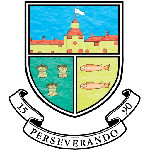Physics
| Dr P Smith (Head of Team) | psmith@conyers.org.uk | Dr R Hallam | rhallam@conyers.org.uk |
| Mrs L McGuiness-Brown | lmcguinness-brown@conyers.org.uk | Mr S Madden | smadden@conyers.org.uk |
| Mrs V Small | vsmall@conyers.org.uk | Miss N Crosby | ncrosby@conyers.org.uk |
| Miss E Lowther | elowther@conyers.org.uk | Mrs R Hill | rhill@conyers.org.uk |
| Mrs H Harrington | hharrington@conyers.org.uk | Mr A Walton | awalton@conyers.org.uk |
| Miss R Armstrong | rarmstrong@conyers.org.uk | Miss E Malcolm | emalcolm@conyers.org.uk |
Key Stage 4 Curriculum Map
Curriculum Intent
Enthuse and engage each and every student with science and the scientific world.
Students appreciate how the theories and concepts they are studying relate to their everyday life and how science enriches wider society
To equip and develop, within students, a wide variety of transferable skills that meet their whole-life learning needs.
Key Knowledge and Skills
Key knowledge areas in which all students are expected to have developed an appreciation are: energy, electricity, particles and radiation, forces and motion, and Waves. Students should, within the context of these areas, be able to:
- Use conceptual models and theories to make sense of the observed natural phenomena, giving sound explanations of said phenomena using a wide range of appropriate scientific ideas, language, knowledge and understanding;
- Plan, carry out, draw conclusions and evaluate the validity of practical laboratory work;
- Use appropriate mathematics to support problem solving, analysis and the drawing of robust conclusions.
- Evaluate the impact on the environmental, and society, of physics (and generally, science)
Sequence Discussion
KS4 Physics builds on KS3 work, while adding new areas of study and complexity. We start with electricity as a means of mediating energy transfer and an efficient and ‘clean’ way (build on the Y9 energy work). Work on what happens to atoms – radioactive processes, changes of state, pressure follow on and in investigation of the fundamental nature of matter and how energy interacts with it. Forces and motion moves from the small scale back to everyday physics – explanations of why things happen when viewed through both energetics and forces as an alternative approach to explaining movement. Waves rounds off the course, considering how we use energy for communication.
Year 10
Half Term 1
Electricity
Half Term 2
Electricity
Half Term 3
Particles
Half Term 4
Radiation
Half Term 5
Forces Part 1
Half Term 6
Review of all the Physics
Year 11
Half Term 1
Forces Part 2
Half Term 2
Forces Part 3
Half Term 3
Waves
Half Term 4
Waves
Electromagnetism

